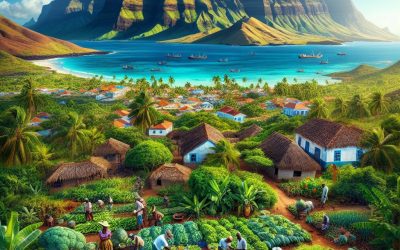Cayman Islands
Cayman Islands Capital of Cayman Islands: George Town Population (Estimated July 2012): 52,560 Area: 264 km2 or 102 mi2 Currency: Cayman Islands Dollar (CI$) Official Language: English Political Information: British Overseas Territory Official Religion: No...
Cape Verde
Cape Verde (República de Cabo Verde (Republic of Cape Verde)) Capital of Cape Verde: Praia Population (Estimated July 2012): 523,568 Area: 4,033 km2 or 1,557 mi2 Currency: Escudo (C.V.Esc.) Official Language: Portuguese Political Information: Parliamentary Republic...
Canada
Canada Capital: Ottawa Population (Estimated July 2012): 34,300,083 Area: 9,984,670 km2 or 3,855,103 mi2 Currency: Canadian Dollar (Can$) Official Language: English and French Political Information: Federal Parliamentary Democracy and Constitutional Monarchy...
Cameroon
Cameroon (République du Cameroun (French); Republic of Cameroon (English)) Capital: Yaoundé Population (Estimated July 2012): 20,129,878 Area: 476,350 km2 or 183,920 mi2 Currency: CFA franc (CFAF) Official Language: French and English Political Information: Republic...
Cambodia
Cambodia (Preahreacheanachakr Kampuchea (Kingdom of Cambodia)) Capital: Phnom Penh Population (Estimated July 2012): 14,952,665 Area: 181,035 km2 or 69,898 mi2 Currency: Riel (KHR) Official Language: Khmer Political Information: Parliamentary Democracy and...
Burundi
Burundi (Republika y’u Burundi (Rundi); République du Burundi (French) (Republic of Burundi)) Capital of Burundi : Bujumbura Population (Estimated July 2012): 10,557,259 Area: 27,816 km2 or 10,740 mi2 Currency: Burundi Franc (FBu) Official Language: Rundi; French...
Burma
Burma Capital: Rangoon (Yangon) Note: Nay Pyi Taw is the administrative capital Population (Estimated July 2012): 54,584,650 Area: 676,577km2 or 261,228mi2 Currency: Myanmar Kyat (K) Official Language: Myanmar (Burmese) Political Information: Presidential...
Burkina Faso
Burkina Faso Capital of Burkina Faso : Ouagadougou Population (Estimated July 2012): 17,275,115 Area: 270,764 km2 or 104,543 mi2 Currency: CFA franc (CFAF) Official Language: French Political Information: Semi-Presidential Republic Official Religion: No...
Bulgaria
Bulgaria (Republika Bŭlgaria (Republic of Bulgaria)) Capital of Bulgaria : Sofia Population (Estimated July 2012): 7,037,935 Area: 111,002 km2 or 42,858 mi2 Currency: Lev (Lv; Plural Leva) Official Language: Bulgarian Political Information: Parliamentary Democracy...
Brunei
Brunei (Negara Brunei Darussalam (State of Brunei Darussalam)) Capital of Brunei : Bandar Seri Begawan Population (Estimated July 2012): 408,786 Area: 5,765 km2 or 2,226 mi2 Currency: Brunei dollar (B$) Official Language: Malay Political Information: Malay Islamic...
British Virgin Islands
British Virgin Islands Capital of the British Virgin Islands : Road Town, Tortola Population (Estimated July 2012): 31,148 Area: 153 km2 or 59 mi2 Currency: U.S. Dollar (U.S.$) Official Language: English Political Information: Overseas Territory of the UK...
British Indian Ocean Territory
British Indian Ocean Territory Capital of the British Indian Ocean Territories : N/A Population (Estimated February 2012): 2,800 US and UK military personnel. Area: 54,400 km2 or 21,004 mi2 Currency: United States Dollar (USD) Official Language: English...











